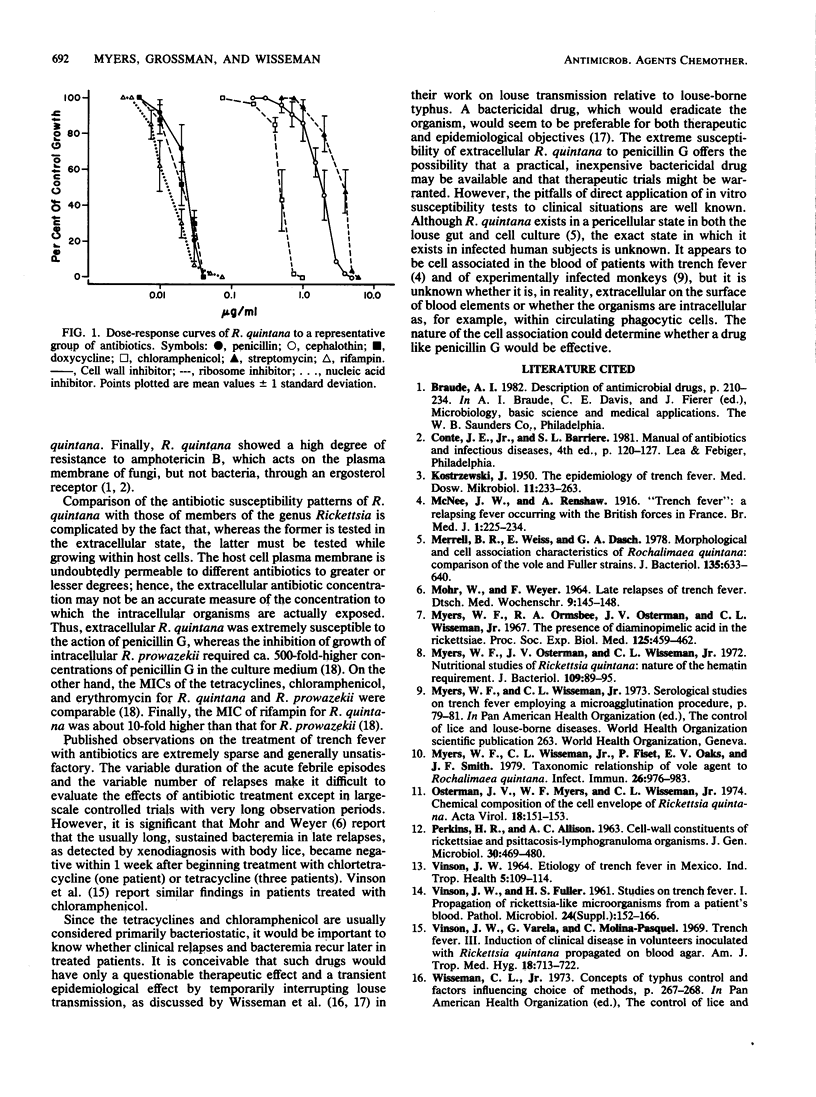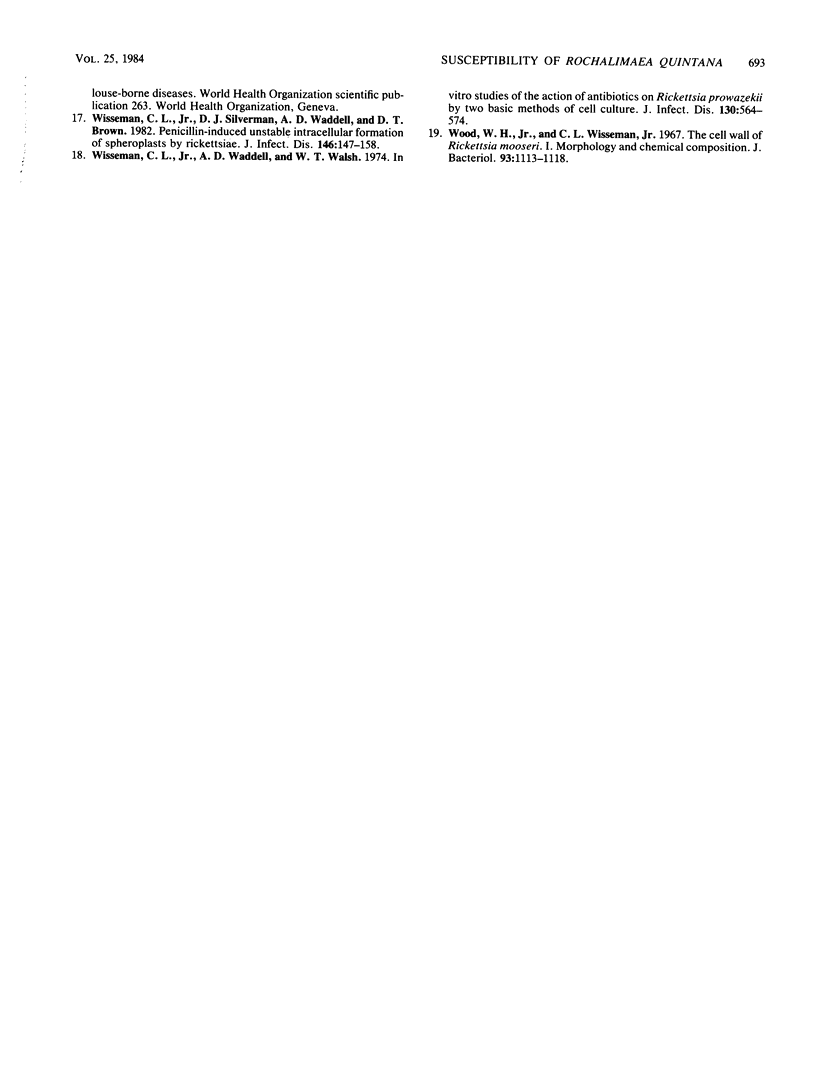Abstract
Rochalimaea quintana, the etiological agent of trench fever, was tested by an agar dilution method for its susceptibility to the following 14 antibiotics: penicillin G, methicillin, ampicillin, cephalothin, vancomycin, doxycycline, tetracycline, erythromycin, chloramphenicol, streptomycin, kanamycin, rifampin, colistin, and amphotericin B. The MIC of each of these antibiotics was determined. The results showed that R. quintana is susceptible in vitro to these antibiotics, with the exception of vancomycin, kanamycin, streptomycin, colistin, and amphotericin B.
Full text
PDF



Selected References
These references are in PubMed. This may not be the complete list of references from this article.
- Merrell B. R., Weiss E., Dasch G. A. Morphological and cell association characteristics of Rochalimaea quintana: comparison of the Vole and Fuller strains. J Bacteriol. 1978 Aug;135(2):633–640. doi: 10.1128/jb.135.2.633-640.1978. [DOI] [PMC free article] [PubMed] [Google Scholar]
- Myers W. F., Osterman J. V., Wisseman C. L., Jr Nutritional studies of Rickettsia guintana: nature of the hematin requirement. J Bacteriol. 1972 Jan;109(1):89–95. doi: 10.1128/jb.109.1.89-95.1972. [DOI] [PMC free article] [PubMed] [Google Scholar]
- Myers W. F., Wisseman C. L., Jr, Fiset P., Oaks E. V., Smith J. F. Taxonomic relationship of vole agent to Rochalimaea quintana. Infect Immun. 1979 Dec;26(3):976–983. doi: 10.1128/iai.26.3.976-983.1979. [DOI] [PMC free article] [PubMed] [Google Scholar]
- PERKINS H. R., ALLISON A. C. Cell-wall constituents of rickettsiae and psittacosis-lymphogranuloma organisms. J Gen Microbiol. 1963 Mar;30:469–480. doi: 10.1099/00221287-30-3-469. [DOI] [PubMed] [Google Scholar]
- VINSON J. W., FULLER H. S. Studies on trench fever. I. Propagation of Rickettsia-like microorganisms from a patient's blood. Pathol Microbiol (Basel) 1961;24(Suppl):152–166. [PubMed] [Google Scholar]
- Vinson J. W., Varela G., Molina-Pasquel C. Trench fever. 3. Induction of clinical disease in volunteers inoculated with Rickettsia quintana propagated on blood agar. Am J Trop Med Hyg. 1969 Sep;18(5):713–722. [PubMed] [Google Scholar]
- Wisseman C. L., Jr, Silverman D. J., Waddell A., Brown D. T. Penicillin-induced unstable intracellular formation of spheroplasts by rickettsiae. J Infect Dis. 1982 Aug;146(2):147–158. doi: 10.1093/infdis/146.2.147. [DOI] [PubMed] [Google Scholar]
- Wisseman C. L., Jr, Waddell A. D., Walsh W. T. In vitro studies of the action of antibiotics on Rickettsia prowazeki by two basic methods of cell culture. J Infect Dis. 1974 Dec;130(6):564–574. doi: 10.1093/infdis/130.6.564. [DOI] [PubMed] [Google Scholar]
- Wood W. H., Jr, Wisseman C. L., Jr The cell wall of Rickettsia mooseri. I. Morphology and chemical composition. J Bacteriol. 1967 Mar;93(3):1113–1118. doi: 10.1128/jb.93.3.1113-1118.1967. [DOI] [PMC free article] [PubMed] [Google Scholar]


